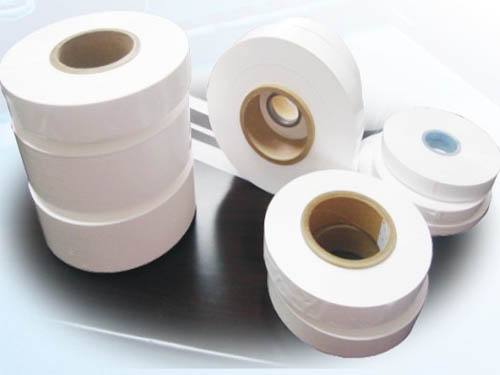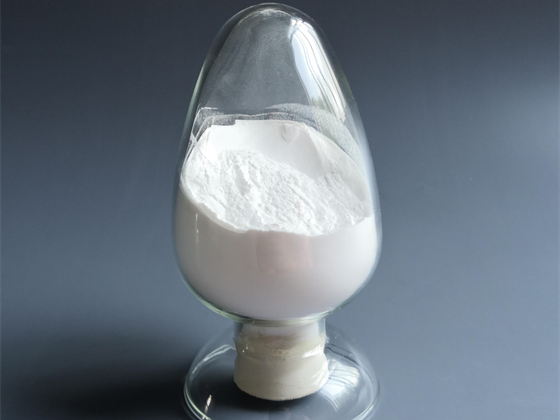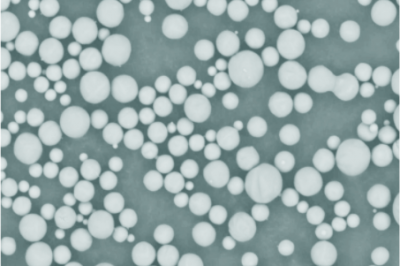

The use of lithium-ion batteries is becoming more and more popular, and the requirements for the performance of lithium-ion batteries are also increasing. As one of the key inner layer components of lithium-ion batteries, the performance of the separator determines the interface structure and internal resistance of the battery and directly affects the capacity, cycle, and safety performance of the battery.

In lithium-ion batteries, after the separator absorbs the electrolyte, it can isolate the positive and negative electrodes and prevent short circuits, while allowing the conduction of lithium ions; when overcharged or the temperature rises, the separator blocks current conduction through closed pores to prevent explosions.
The performance of the separator determines the key characteristics of the battery such as capacity, cycle performance, and charge-discharge current density. The thermal shrinkage performance is an important indicator of the performance of the separator, and it is also an important performance related to the safety performance of the battery.
The lithium-ion battery separators currently on the market are mainly: polyolefin separators, non-woven-based separators, and other types of separators. Although polyolefin separators have many advantages, their thermal stability and mechanical properties are poor. During the use of the battery, due to external and internal reasons, the temperature of the battery will rise, which will cause the diaphragm to shrink, resulting in short circuits, fire, and even explosion.
The 3C market of lithium batteries has put forward new requirements for battery separators, which need to develop in the direction of thinner thickness and better heat resistance. This further highlights the importance of the thermal shrinkage properties of the ceramic separator.
In order to improve the reliability of lithium-ion batteries, the method of adding inorganic ceramic materials to make ceramic separators for lithium-ion batteries has received a lot of attention, and the inorganic substances used are generally alumina, boehmite, and the like.
This approach takes advantage of the high strength and high-temperature resistance of inorganic ceramic materials. However, the inorganic ceramic material cannot be directly attached to the porous polyolefin separator, so a binder is required to provide adhesion between the inorganic ceramic particles and between the inorganic ceramic particles and the porous polyolefin separator.
The tightly packed nanoparticles can get better thermal shrinkage performance, that is, less thermal shrinkage. Although the ceramic coating cannot avoid the melting of the porous polyolefin separator at high-temperature after the porous polyolefin is melted, it can still be self-supported into a separate layer to prevent the physical contact of the positive and negative electrodes, and with the increase of the thickness of the ceramic coating, the temperature at which thermal shrinkage begins will increase.
The polyolefin separator itself has poor heat shrinkage resistance, so it is generally necessary to improve its heat shrinkage performance through an additional coating. Therefore, the basic requirement of the coating is to have good thermal shrinkage resistance and little influence on properties such as ion permeability and the stability of the coating film in the battery.
Ceramic coatings are popular choices, such as alumina coatings, boehmite coatings. The thermal shrinkage performance of the coating on the separator plays a decisive role in the thermal shrinkage performance of the entire lithium-ion battery separator.

Theoretically, the packing density of a perfect sphere has nothing to do with the diameter of the sphere, but in practice, because the sphere is not a perfect sphere, it is relatively easy to obtain a larger packing density from particles with small particles size.
The thermal shrinkage rate of the ceramic coating film with the larger particle-like spherical alumina particles is higher than that with the smaller particle size.
This is precise because the smaller particle size particles obtain a larger bulk density of the ceramic coating film, and a larger bulk density will lead to a smaller thermal shrinkage rate.
Due to the regular morphology of the quasi-spherical particles, it is easy to form a higher bulk density, and thus its thermal shrinkage performance is better.
On the contrary, peanut-like particles are not easy to form a denser pile, and there are many voids in the loose pile, which will cause adverse effects during the thermal shrinkage process, resulting in excessive thermal shrinkage.
Different kinds of adhesives were selected, respectively mixed with alumina dispersion to form a coating solution, which was coated on the PE base film, and the thermal shrinkage rate of the coating in the MD and TD directions at 130 °C for 1 h was tested respectively. Glass transition of the binder.
A coating solution was prepared with different content of binder and alumina dispersion, which was coated on the PE base film, and the thermal shrinkage rate of the coating in the MD and TD directions at 120 °C for 1 h was tested respectively. It can be obtained that, within a certain range, with the increase of the binder content, the thermal shrinkage performance of the coating film becomes worse.
First of all, the adhesive itself is a polymer material, which shrinks when heated. After the content increases, the shrinkage rate increases;
Secondly, the corresponding alumina content, which mainly plays a role in thermal shrinkage, decreases, and the thermal shrinkage performance of the coating film becomes poor;
Finally, with the increase of binder content, the bulk density of the coating becomes smaller, which leads to the deterioration of its thermal shrinkage performance.
The film-forming aid can reduce the film-forming temperature of the adhesive and reduce the thermal shrinkage of the diaphragm to a certain extent, but there are some problems that need to be paid attention to. When the film additive exceeds a certain amount, the coating appearance will be affected; the drying process is strict, and the residue will deteriorate the safety performance of the battery.
With the increase of coating thickness, the thermal shrinkage rate of ceramic coating will decrease significantly.
The ceramic coating film is mainly composed of a base film with poor heat shrinkage performance and a coating with better heat shrinkage performance. The crosslinking density and processing technology of the base film will affect the heat shrinkage performance of the base film.
If the coating has only heat resistance without strength, its heat shrinkability to the base film is not improved. This shows the supporting effect of the inorganic coating on the shrinkage of the base film and the requirement for the strength of the coating.
When the support strength of the coating is less than the heat shrinkage stress of the base film, the heat shrinkage performance of the ceramic coating film for lithium-ion batteries is poor. The thermal shrinkage performance of the film is improved.

High filling: The thermally conductive material realizes heat conduction through phonons, and thermally conductive fillers play an important role in it. In order to improve the heat transfer efficiency of different thermal conduction channels, powders of different particle sizes are usually used to achieve close filling between particles, to obtain a mixture with low viscosity…

Could you first provide samples to test our market?Yes. We can. We will refund the sample fee to you after confirming the order but pay the freight cost. How long will it take to send the sample?Generally, samples can be shipped within 1-3 days depending on quantity and our stock. What kind of payment terms…